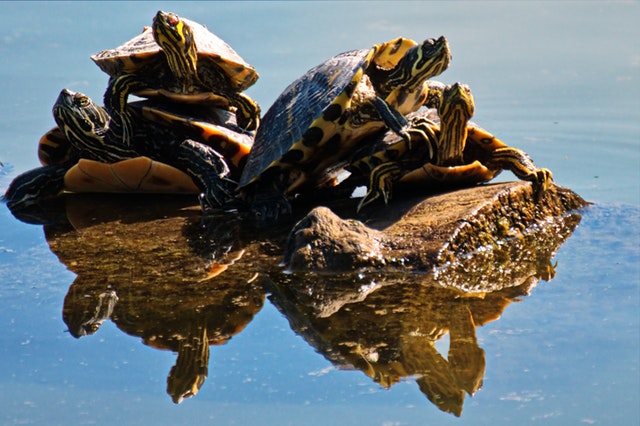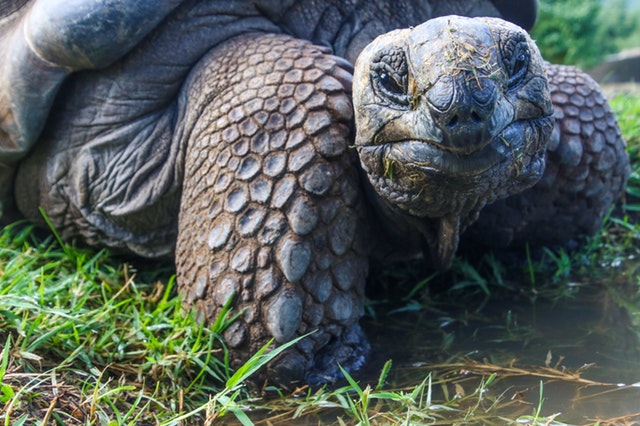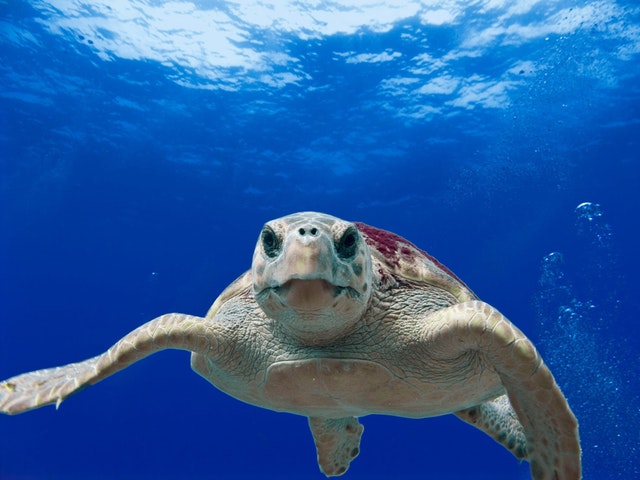A Beginner’s Guide To Caring For Turtles
 Terrapin
Terrapin
This is used to refer to freshwater or semi-aquatic turtles. Red-eared sliders and pond sliders, these are included in the list.
Tortoise
This refers to turtles who are mostly land-dwelling. These turtles grow up to be really big.
Turtle
This is used as the broad term for all chelonians. It can also be used to refer to most aquatic turtles and keeping them as a pet is nearly impossible.
We’re going to use the name turtle as a broad term that includes tortoises, terrapins and turtles. What’s the difference? Tortoises are more terrestrial while turtles and terrapins are more aquatic. Terrapins are more likely found in freshwater while turtles prefer the sea. But we’re going to use the term turtle for all of them. Got it?
Alright, let’s take a look at this adorable slowpokes and find out how we can create a better quality of life for them to enjoy while they are under your care.
Its no secret, turtles have very long lives if cared for properly. It’s a pet that can be handed down from one generation to the next. And get this: some of the oldest turtles
and tortoises are owned by very important people.
 But you’ll only get a pet that lives longer than you if you provide it with what it needs. They’re pretty basic needs, good food, clean water, good housing conditions and enough space to roam in. For terrapins, you will need water where they can swim in. Tortoises, not so much. Tortoises are more terrestrial. And you’re more likely to have some success with terrapins rather than turtles because sea turtles prefer a larger body of water to swim around in.
But you’ll only get a pet that lives longer than you if you provide it with what it needs. They’re pretty basic needs, good food, clean water, good housing conditions and enough space to roam in. For terrapins, you will need water where they can swim in. Tortoises, not so much. Tortoises are more terrestrial. And you’re more likely to have some success with terrapins rather than turtles because sea turtles prefer a larger body of water to swim around in.
Diet
Turtles are omnivorous but they especially love lettuce, watermelons, cabbages, bananas and mangoes. Plant material comprises the bulk of your turtle’s diet. For a balanced diet, add some meat, fish and eggs for protein. Healthy treats come in the form of calcium covered crickets, mealworms, earthworms and others.
Turtles are very messy eaters and food will find itself into their pond of water. If this is not removed immediately, it can foul up the water and cause other problems. Seasoned turtle keepers often place their turtles in a separate tank (with water) that can easily be cleaned up after. Your turtle will be reluctant at first but it will eventually get used to this process and can even make them very excited to feed.
Turtles, as they age, require less feeding. Adults need to eat at least once every other day. Hatchlings need to eat daily. Larger specimen only need one feeding per week.
Housing
There are many ways to house your turtle. You can place them in a vivarium
or if they’re big enough, an enclosed area outside.
 In both types of enclosures, you will need these basic things: clean water, a basking area and a place to hide in.
In both types of enclosures, you will need these basic things: clean water, a basking area and a place to hide in.
You definitely need a pool of water for your turtle. Make sure to replace the water regularly. Expert turtle keepers just place a simple metal basin with handles so removal and clean up is easy. Make sure you scrub it thoroughly to remove all bacteria build up. Take note of the water temperature and make sure it isn’t too hot or too cold for your pet.
Surprisingly, some turtles are agile enough to clamber out of their enclosures so make sure you have a screen top or a deterrent to stop them from doing so. Some are also excellent diggers so make sure you have a specially built bottom that prevents escape by tunnelling.
If you keep your pet in a vivarium, you will need an Ultraviolet light source as a substitute for sunlight to help in digestion. You can also bring your turtle outside for its daily sunlight allowance.
You should also have a thermometer to monitor the temperature within and adjust it accordingly. Provide a heater or a lamp so your turtle can have some warmth when it needs some.
A small space for it to crawl into and hide from the elements is perfect whether you keep your turtle inside or outside.
Make sure you keep your turtle inside when it’s too cold outside.
Lastly, make sure you wash your hands thoroughly after spending time with your pet turtle or tortoise because however clean you keep them, there is still a chance
that they can transmit salmonella to you. Oh and don’t be deceived,
turtles can move pretty fast in short spurts.




Comments